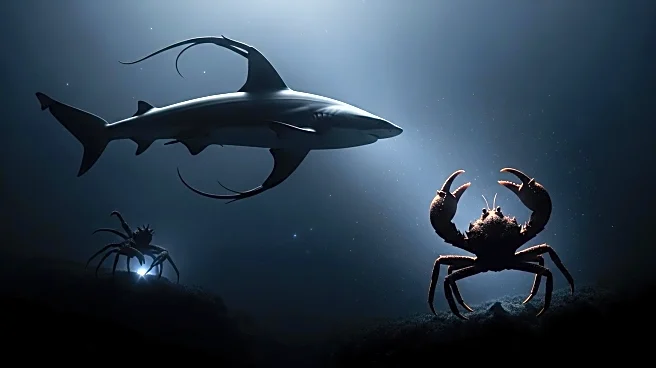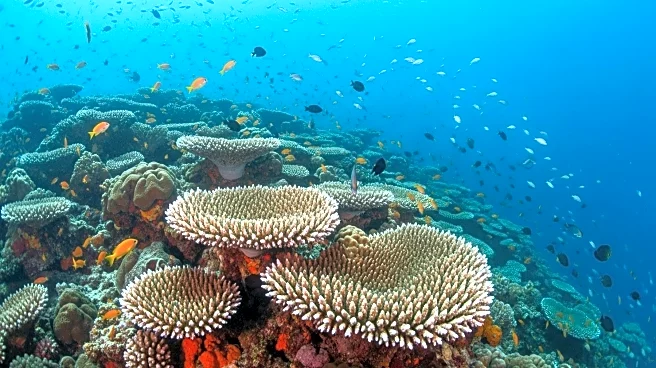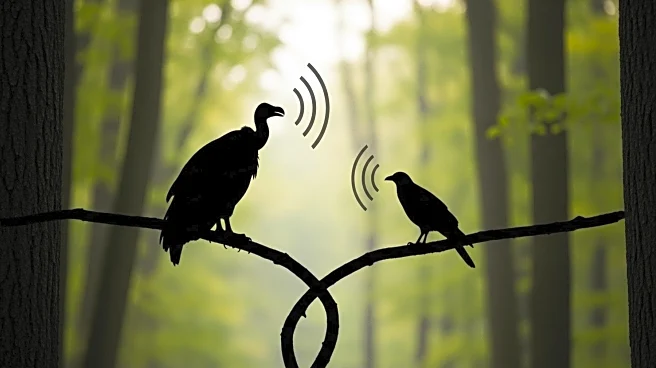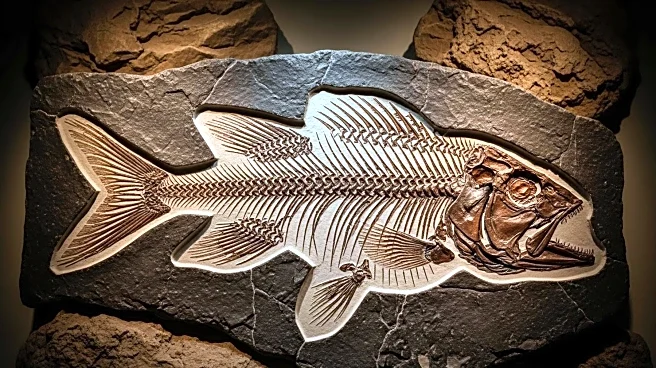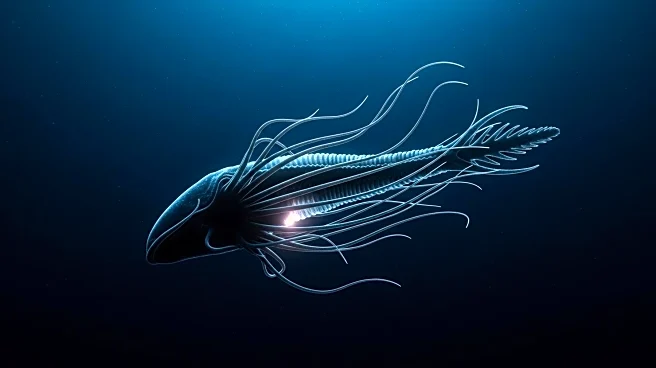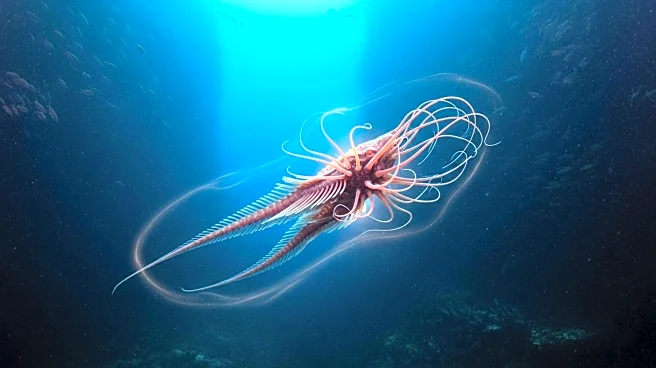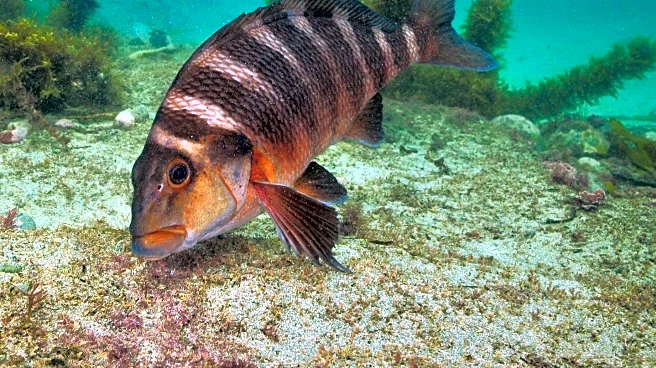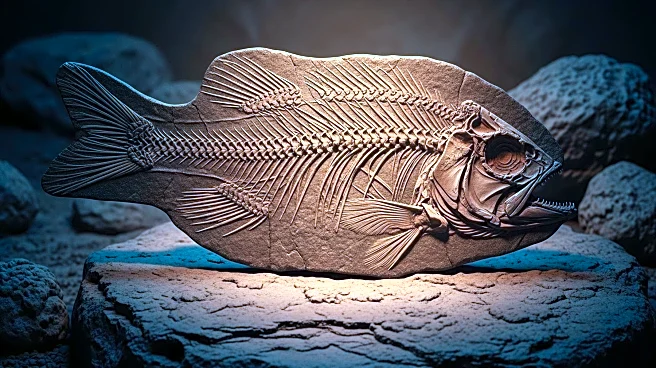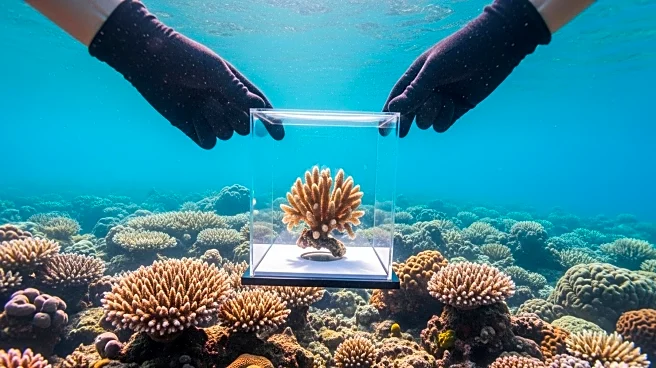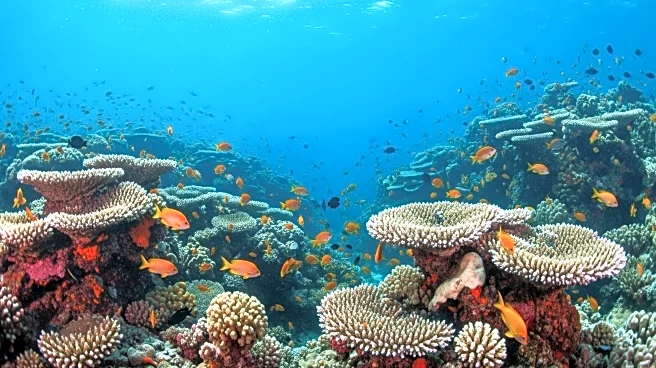What is the story about?
What's Happening?
Researchers from CSIRO have identified two new species from specimens collected during a 2022 voyage of the CSIRO research vessel Investigator. The newly described species include the West Australian Lanternshark, Etmopterus westraliensis, and a porcelain crab, Porcellanella brevidentata. The lanternshark, discovered at depths of up to 610 meters in the Gascoyne Marine Park, is noted for its bioluminescent properties, with light produced by photophores on its belly and flanks. The porcelain crab, found along the Ningaloo coast at depths of up to 122 meters, lives symbiotically with sea pens, soft corals related to sea fans. These discoveries add to nearly 20 new species described from the 2022 voyage, highlighting the rich biodiversity of the deep-sea environment.
Why It's Important?
The discovery of new species like the West Australian Lanternshark and Porcellanella brevidentata underscores the vast, largely unexplored biodiversity of deep-sea environments. These findings contribute to scientific understanding of marine ecosystems and the evolutionary adaptations of species living in extreme conditions. The bioluminescent properties of the lanternshark, for instance, offer insights into survival strategies in low-light environments. Such discoveries can inform conservation efforts and policies aimed at protecting marine biodiversity, particularly in areas like the Gascoyne Marine Park. The ongoing research and identification of new species also highlight the importance of continued exploration and study of oceanic habitats.
What's Next?
Researchers anticipate further discoveries during upcoming CSIRO-led voyages, including a planned survey of the Coral Sea Marine Park. These expeditions aim to deepen understanding of marine biodiversity and potentially identify up to 600 new species from previous voyages. The collaboration among researchers and partners will continue to drive scientific exploration and discovery, contributing to the broader knowledge of oceanic ecosystems and informing conservation strategies. The findings from these voyages may also lead to new scientific publications and increased awareness of the importance of preserving marine environments.
Beyond the Headlines
The discovery of new species in deep-sea environments raises ethical and conservation questions about human impact on these habitats. As exploration continues, it is crucial to balance scientific inquiry with the protection of fragile ecosystems. The symbiotic relationship between the porcelain crab and sea pens highlights the interconnectedness of marine life, emphasizing the need for comprehensive conservation strategies that consider the complex interactions within ecosystems. Additionally, the bioluminescence of the lanternshark may inspire technological innovations in fields such as bioengineering and sustainable lighting solutions.
AI Generated Content
Do you find this article useful?
